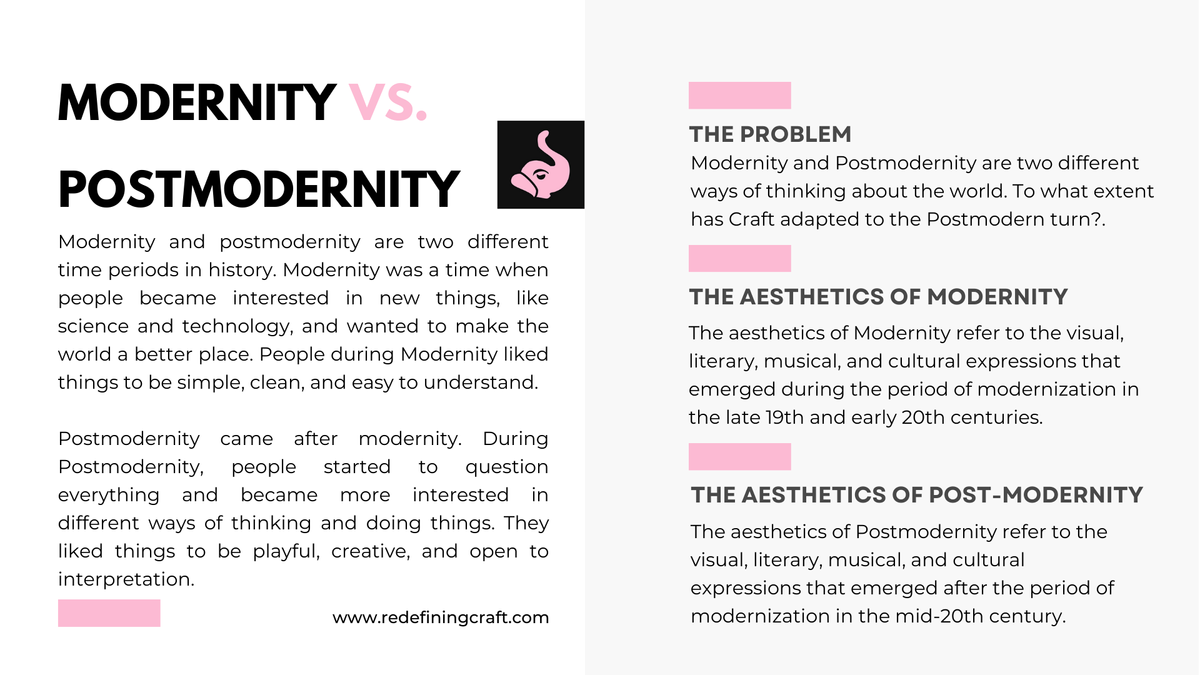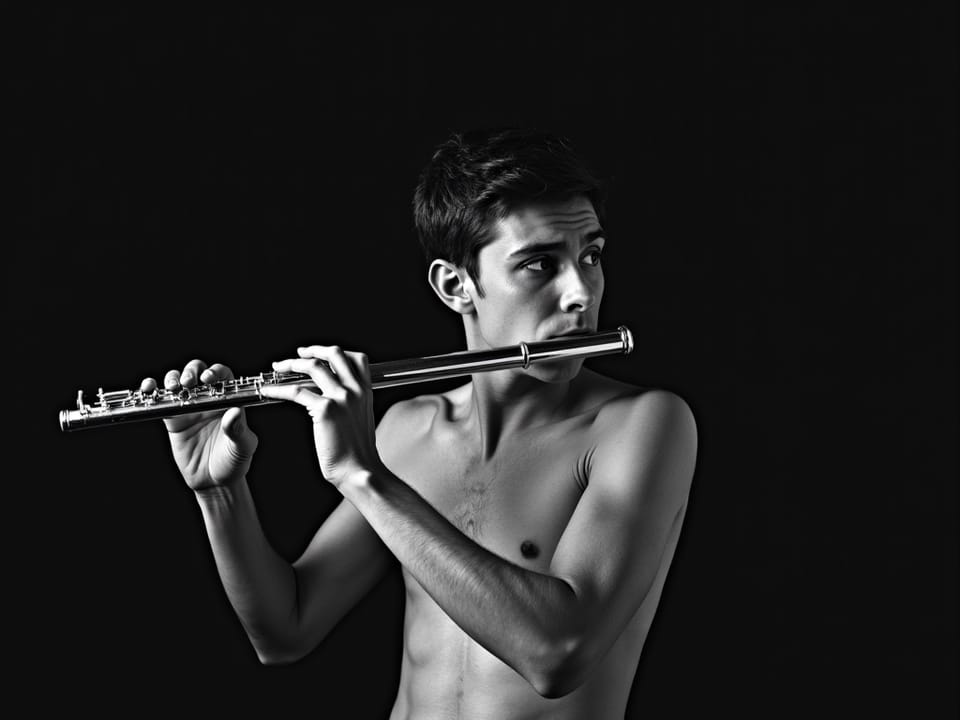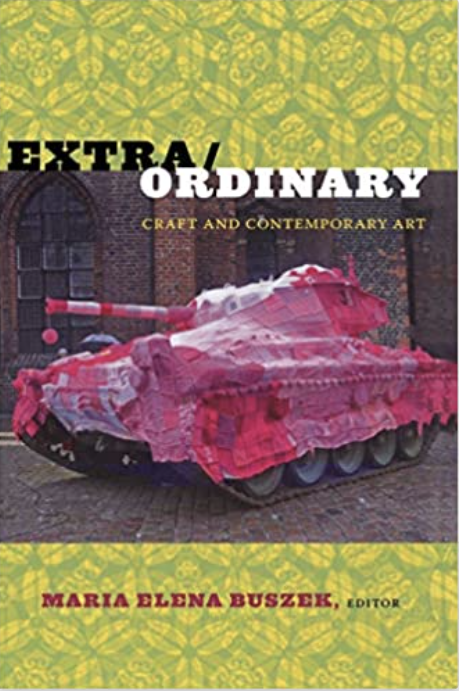Evaluating Craft's Post-Modern Turn
When did it happen? Where are we in the unfolding of this historical process?

Postmodernism is a way of thinking about the world that differs from how people thought about things during modernity. While it is hard to pinpoint exactly, the consensus is that the postmodern era began after World War II and continued through the latter part of the 20th century.
Postmodernism was a reaction against modernism's grand narratives, universal truth claims, and epistemological certainties and instead emphasized the fragmented and contingent nature of knowledge and experience. As a result, it has been seen as a historical process that reflects the shifting cultural, political, and intellectual conditions of the 20th century and beyond.
During postmodernism, people started to doubt big ideas and became more open to different ways of seeing things. They didn't believe that there was only one correct answer to everything, and they began to appreciate more that people could bring their unique perspectives based on lived experience.
The postmodernist perspective advocated against the idea that one group should have all the power and control over everyone else’s thoughts and actions. As I understand it, there is a sense in which the American Craft movement has generally rejected the notion of a universal aesthetic; however, I still have questions about the permanence of this idea in terms of how broadly it has been adopted in the various craft communities.
Certainly, we can identify examples where the craft field has embraced a celebration of diversity and pluralism that aligns with the postmodern view.
But to what extent can we find examples of unconventional materials and techniques being used in a way that we can understand as inherently postmodern aesthetics?
Redefining Craft with Dennis Stevens is a reader-supported publication. To receive new posts and support my work, consider becoming a free or paid subscriber.
I have questions about the extent to which the effect of Postmodernism has been felt in the broader domain of academic discourse; there’s some resistance to letting go of Modern ideals entirely.
I think there is a conversation worth having about the extent to which the discourses of postmodernism have impacted academic research and expression in craft.
To get this conversation started, here is a list of preliminary evaluative criteria:
Decentering the Subject
Postmodernism critiques the idea of a stable and coherent self and instead highlights identity's constructed and fragmented nature. This has challenged traditional academic theories that privilege the subject as the source of meaning and knowledge.
Rejection of Grand Narratives
Postmodernism rejects grand narratives that purport to explain universal truths and experiences. This has led to a rejection of essentialist and universalist academic theories that seek to explain the world in simple terms.
Emphasis on Discourse and Representation
Postmodernism highlights how language and representation shape our understanding of the world. This has focused on the discursive construction of knowledge and examining how power and politics are embedded in academic theories and practices.
Pluralism and Diversity
Postmodernism celebrates diversity and pluralism and has led to a recognition of the importance of multiple perspectives and experiences in academic theory. This has challenged dominant and oppressive academic theories and practices and opened new avenues for inquiry and understanding.
Interdisciplinary Approaches
Postmodernism blurs boundaries between disciplines and encourages interdisciplinary approaches. This has led to a growing recognition of the importance of interdisciplinary research and the development of new theoretical frameworks that bring together multiple perspectives and methodologies.
By way of example, we find expressions of postmodern aesthetics in Marvel Studios’ WandaVision:
In conclusion, the discourses of postmodernism have challenged traditional academic theories, encouraged new and diverse ways of thinking, and opened up new avenues for inquiry and understanding, but— to what extent can we understand that the discourses of Postmodernism have impacted the Craft field?
Where are we today? What’s the prognosis? Where are the points of resistance where notions of modernity still hold on?
I believe that this is a conversation worth having. I hope other academics within the craft field will take this on as a project so these questions can be more broadly interrogated.
Redefining Craft with Dennis Stevens is a reader-supported publication. To receive new posts and support my work, consider becoming a free or paid subscriber.


